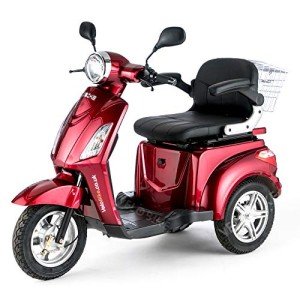Guide To Velco: The Intermediate Guide Towards Velco
페이지 정보

본문
Velcro: A Revolutionary Fastening Solution
Intro
Velcro, a name that has almost become synonymous with hook-and-loop fasteners, has reinvented the method we think of fastening products. Frequently a staple in numerous markets and families, Velcro uses a simple yet efficient option to protect things without the need for buckles, buttons, or zippers. This short article explores the origins, systems, applications, and advantages of Velcro along with dealing with some regularly asked questions.

The Origins of Velcro
Velcro was created in the late 1940s by Swiss engineer George de Mestral. After a hunting journey in the Alps, Mestral ended up being amazed by the burrs that stayed with his dog's fur. Upon closer evaluation, he realized they operated through a system of tiny hooks that ensnared anything with a loop, including material and fur. Recognizing the capacity of this natural attachment mechanism, Mestral started a journey to recreate it in an artificial form. By 1955, he had patented his development, branding it "Velcro," a mix of the French words "velours" (velour) and "crochet" (hook).
How Velcro Works
Velcro consists of two different pieces: a hook side and a loop side. These two elements interlock when pushed together, developing a strong bond that can be quickly released with a basic pull. The functioning of Velcro can be broken down into these primary elements:
| Component | Description |
|---|---|
| Hook Side | This side includes small hooks that catch and keep loops. |
| Loop Side | This side consists of soft loops developed to yield to hooks when gotten in touch with. |
System of Fastening
- Interlocking: The hooks on one side catch the loops on the other, developing a physical interlock.
- Strength: The variety of hooks and loops ensures a significant holding strength, making it suitable for both light and sturdy applications.
- Alleviate of Use: Velcro can be disengaged and re-engaged numerous times without losing its efficiency, setting it apart from more traditional fastening approaches.
Applications of Velcro
Velcro has discovered application throughout a myriad of sectors, including:
Fashion Industry
- Sportswear
- Shoes (particularly children's shoes)
- Accessories (belts, bags)
Medical Field
- Orthopedic gadgets
- Plasters
- Prosthetics
Automotive and Aerospace
- Seat covers
- Interior linings
- Security equipment
Family Items
- Drapes
- Rugs
- Organizers
Industrial Use
- Cabling
- Equipment securing
- Tools storage
Benefits of Velcro
The appeal of Velcro can be credited to numerous advantages it offers over standard attaching approaches:
- Quick and Easy to Use: No tools are required, making it user-friendly.
- Flexible: Works on numerous surfaces and materials.
- Adjustable: Allows for simple modification in size (e.g., straps).
- Resilient: Holds up under recurring use.
- Washable: Maintains its function even after cleaning.
Prospective Drawbacks
While Velcro is advantageous in numerous contexts, there are some constraints to be aware of:
- Noise: The noise of Velcro being pulled apart can be loud in peaceful settings.
- Use and Tear: Over time, extreme use may result in fraying or decreased effectiveness.
- Limitations with Heavy Loads: While it can hold significant weight, it might not be ideal for extremely heavy products.
Frequently asked questions about Velcro
1. Is Velcro water resistant?
Yes, Velcro can be made from waterproof products, making it ideal for outdoor and marine applications.
2. Can Velcro be reused?
Definitely! Velcro is created for duplicated use, and many items can be resealed and opened several times.
3. How do you clean Velcro?
Cleaning Velcro is basic. You can use a lint roller or Velco (mouse click the following internet site) a soft brush to get rid of debris. For persistent dirt, it might be rinsed gently with water.
4. Is Velcro strong enough to replace zippers?
In numerous applications, yes, Velcro can effectively change zippers, particularly in instances where quick fastening and loosening are required.
5. Exist various types of Velcro?
Yes, there are many types, including varying widths, colors, adhesive strengths, and products created for various applications (i.e., high-temperature, outdoor, etc).
Velcro has actually shown to be a flexible and innovative securing option that has actually infiltrated numerous sectors, enhancing both everyday life and commercial applications. Its ability to provide a dependable and easy-to-use technique of attaching makes it a long-lasting component of contemporary style. From casual garments to advanced medical applications, Velcro continues to support its credibility as a staple attachment method for countless uses. Whether it's for the fashion lover or an expert in the medical field, Velcro remains an unsung hero in the world of fastening technology.
By revolutionizing how we link and protect items, Velcro is a testimony to the power of ingenious thinking and simplicity in design. As innovation advances, we can only anticipate a lot more creative applications for this exceptional innovation in the future.

- 이전글Where Will Best Home Treadmill UK One Year From This Year? 25.06.10
- 다음글The 10 Most Terrifying Things About Robot Vacuums & Mops 25.06.10
댓글목록
등록된 댓글이 없습니다.